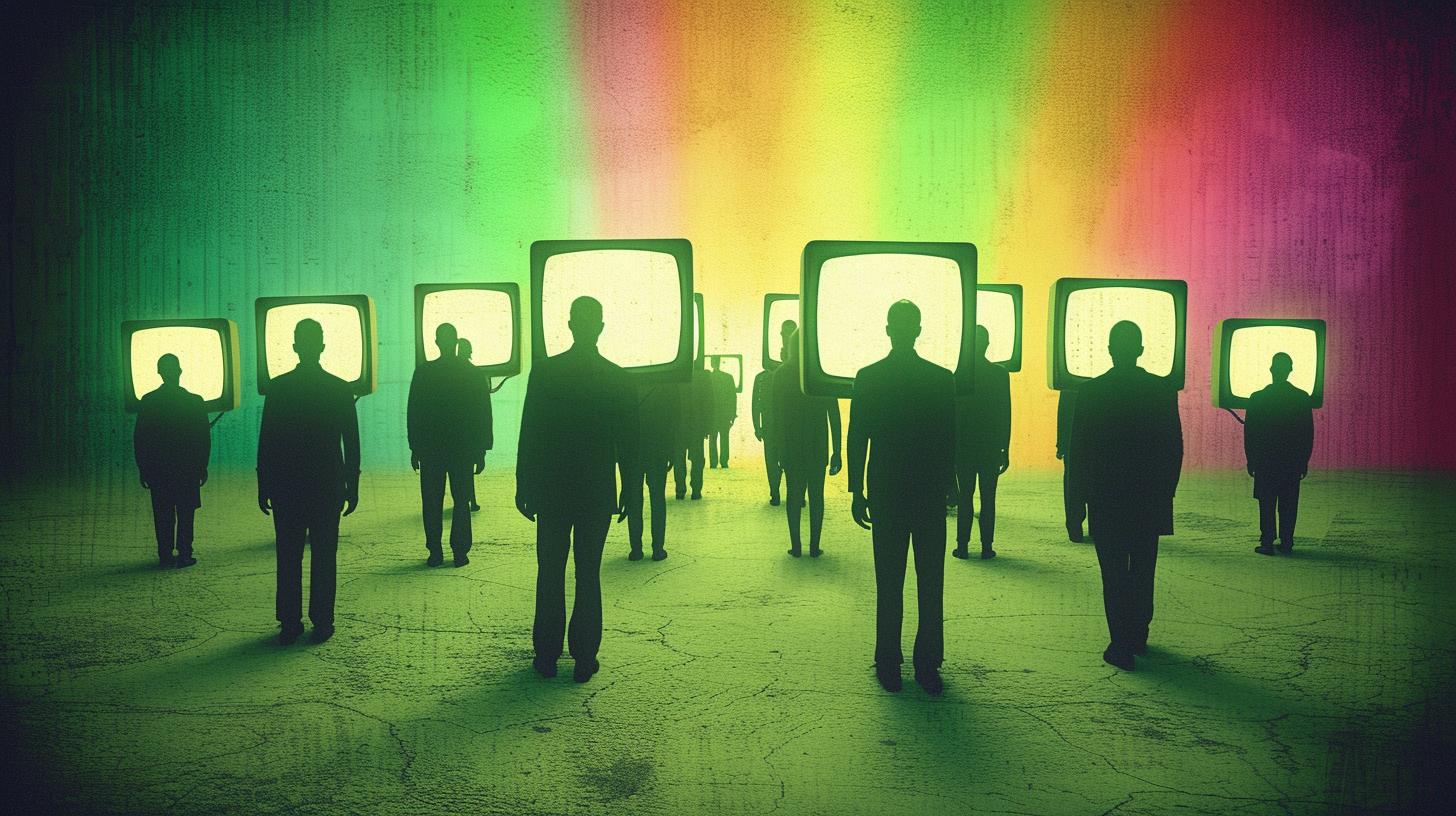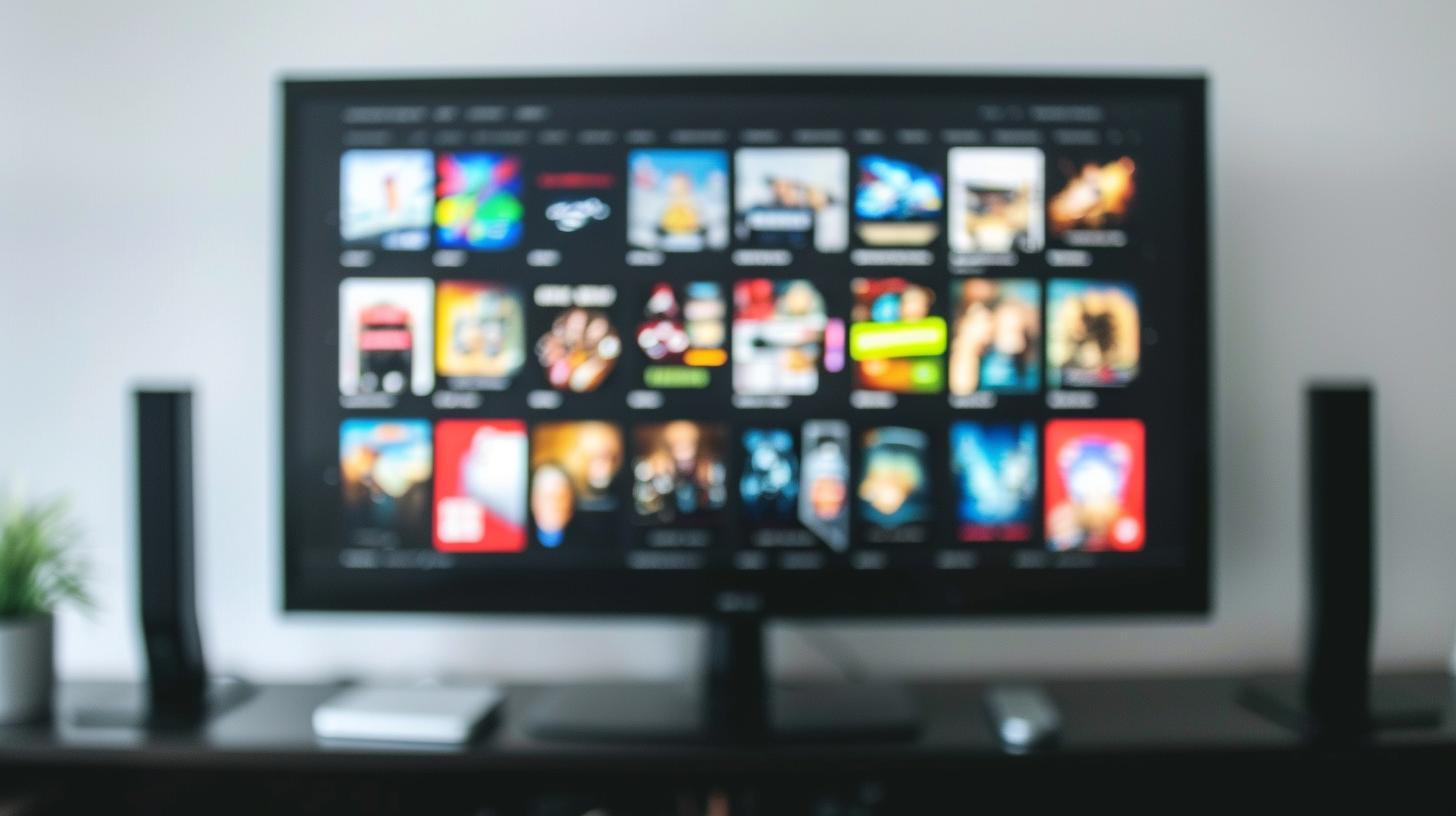
Are you tired of dealing with constant interruptions while streaming your favorite TV shows or movies? If you’re looking for a TV buffering fix, you’ve come to the right place. In this article, we’ll explore the common causes of TV buffering and provide troubleshooting tips to help you enjoy uninterrupted viewing.
TV buffering issues can be frustrating and disruptive, causing delays and interruptions in your streaming experience. Whether you’re watching live TV, on-demand content, or using a streaming service like Netflix or Hulu, buffering problems can put a damper on your entertainment.
In this comprehensive guide, we’ll delve into the various factors that contribute to TV buffering, such as internet connection issues, Wi-Fi signal strength, and device performance. By understanding these causes, you’ll be better equipped to address and resolve buffering problems for a smoother streaming experience.
From assessing your internet connection to utilizing Wi-Fi boosters or extenders, we’ll cover a range of solutions to improve your TV streaming quality. With our troubleshooting tips and strategies for optimizing your internet setup, you can minimize buffering issues and enjoy seamless viewing without interruptions. So let’s dive into the world of TV buffering issues and explore effective fixes to enhance your streaming experience.
Common Causes of TV Buffering
When experiencing TV buffering, it can be frustrating to pinpoint the exact cause of the issue. However, understanding the common causes of TV buffering can help you troubleshoot and find a solution. Below are some of the most prevalent reasons for TV buffering that you may encounter.
Insufficient Internet Speed
One of the primary culprits of TV buffering is having slow or insufficient internet speed. Streaming high-definition content, especially on multiple devices at once, requires a significant amount of bandwidth. If your internet speed is not up to par, you may experience constant buffering while watching your favorite shows or movies.
Network Congestion
Network congestion occurs when there is heavy internet traffic within your area or on your network. This can lead to slower speeds and increased buffering as multiple users compete for bandwidth. It’s important to consider the time of day when you typically experience buffering issues, as peak usage hours can significantly impact your streaming quality.
Weak Wi-Fi Signal
A weak Wi-Fi signal from your router to your streaming device can result in TV buffering. Distance from the router, physical obstructions, and interference from other electronic devices can all contribute to a weak Wi-Fi signal, affecting the stability of your streaming connection.
Device Performance
The performance of your streaming device or Smart TV could also be a factor in experiencing TV buffering issues. Older devices may struggle to keep up with demanding streaming requirements, resulting in constant buffering interruptions during playback.
Overloaded Cache and Cookies
Over time, cache and cookies accumulated on your streaming device can impact its performance and lead to TV buffering problems. Clearing out these temporary files can help improve streaming quality and reduce buffering interruptions.
Now that you have an understanding of the common causes of TV buffering issues, it’s important to assess your specific situation and take appropriate steps to address these issues for uninterrupted viewing enjoyment without constantly facing tv buffering fix problems.
Assessing Your Internet Connection for TV Buffering
TV buffering issues can be frustrating, especially when you’re in the middle of watching your favorite show or movie. One of the key factors that contribute to TV buffering is your internet connection. In this section, we will explore how to assess your internet connection for TV buffering and what steps you can take to improve your streaming experience.
Speed Test
The first step in assessing your internet connection for TV buffering is to conduct a speed test. There are several online tools and apps available that allow you to check the download and upload speeds of your internet connection.
A minimum recommended speed for streaming HD content is 5 Mbps, while 25 Mbps or higher is suggested for 4K streaming. If your speed test results are significantly lower than these recommendations, then it’s likely that your internet connection is a contributing factor to the TV buffering issues.
Network Congestion
Another factor to consider when assessing your internet connection for TV buffering is network congestion. Network congestion occurs when there are too many devices using the same internet connection at the same time, causing slow speeds and potential buffering during streaming. Ensure that no other devices are heavily using the internet while you are streaming on your TV, as this could be impacting the quality of your stream.
Bandwidth Allocation
Assessing how bandwidth is allocated within your home network can also help identify potential causes of TV buffering. If other devices on your network are consuming a significant portion of the available bandwidth, it can affect the quality of your TV streaming. You may need to prioritize bandwidth for streaming purposes or limit the usage of other devices during peak streaming times.
By conducting a speed test, checking for network congestion, and managing bandwidth allocation within your home network, you will be able to better assess your internet connection for TV buffering issues. Once you have identified any potential problems with your internet connection, you can then take appropriate measures to fix TV buffering and enjoy uninterrupted TV streaming.
Troubleshooting Tips for TV Buffering Issues
Check Your Internet Speed
One of the first steps in troubleshooting TV buffering issues is to check your internet speed. Use an online speed test tool to determine if your internet connection is delivering the speed you’re paying for. You should ideally have a download speed of at least 25 Mbps for HD streaming and 50 Mbps for 4K streaming. If your current speed doesn’t meet these requirements, it could be the source of your TV buffering problem.
Reboot Your Router and Modem
Sometimes, a simple reboot of your router and modem can fix temporary network issues that cause TV buffering. Unplug both devices from power, wait for about 30 seconds, and then plug them back in. Allow them to fully restart before testing your TV streaming again.
Reduce Network Traffic
If multiple devices are using the same network for activities like gaming or downloading large files, this can affect the bandwidth available for TV streaming and result in buffering. Try minimizing network traffic by pausing other downloads or limiting activities on other devices while you’re watching TV.
Clear Cache on Your Streaming Device
Clearing the cache and cookies on your streaming device can help improve its performance and reduce buffering issues. This process will vary depending on the type of device you’re using, but generally, you can find this option in the settings or preferences menu of your streaming app.
Improve Wi-Fi Signal Strength
Weak Wi-Fi signal can also contribute to TV buffering problems. Consider relocating your router to a more central location in your home or investing in Wi-Fi boosters or extenders to improve signal strength in areas where you typically watch TV.
Overall, these troubleshooting tips can help address common causes of TV buffering and improve your streaming experience. If you continue to experience issues despite trying these fixes, it may be necessary to explore other options such as upgrading your internet plan or contacting your internet service provider for further assistance with resolving TV buffering problems.
Upgrading Your Internet Plan to Fix TV Buffering
When facing TV buffering issues, one of the first steps you can take to mitigate the problem is upgrading your internet plan. A slow or unreliable internet connection is often the main culprit behind buffering problems on your TV. By increasing your internet speed and bandwidth, you can improve your streaming experience and reduce or eliminate buffering altogether.
According to a study by the FCC, the average household now has 11 connected devices. With multiple devices competing for bandwidth, it’s important to have a sufficient internet plan that can handle the demand for data. Upgrading to a higher speed plan can provide more bandwidth, reduce congestion, and ultimately result in smoother streaming without constant pauses for buffering.
Before upgrading your internet plan, it’s crucial to assess your current usage and needs. Determine the number of devices connected to your network and the typical activities being performed, such as video streaming, online gaming, or video conferencing. This will help you choose an internet plan with the appropriate speed and capacity to support all these activities without experiencing interruptions due to buffering.
Additionally, consider whether you have a data cap on your current plan. Streaming high-definition content consumes more data compared to standard definition streaming. Upgrading to an unlimited data plan may be necessary if you frequently experience buffering issues while watching HD content on your TV.
In many cases, upgrading your internet plan may be the most effective tv buffering fix solution if other troubleshooting tips have not resolved the issue. Keep in mind that while this option may require a higher monthly fee, the improved streaming quality and overall better online experience make it a worthwhile investment for avid TV streamers.
| Internet Plan | Bandwidth | Data Cap |
|---|---|---|
| Basic Plan | 25 Mbps | 500GB/month |
| Upgraded Plan | 100 Mbps | Unlimited |
Using Wi-Fi Boosters or Extenders to Improve TV Streaming
Wi-Fi boosters and extenders can be a lifesaver when it comes to improving TV streaming and fixing buffering issues. These devices work by extending the range of your Wi-Fi signal, ensuring that you have a strong and stable connection throughout your home. Whether you’re using a Smart TV, streaming device, or gaming console, Wi-Fi boosters and extenders can significantly improve your overall streaming experience.

One of the common causes of TV buffering is a weak Wi-Fi signal, especially if you’re trying to stream content in an area of your home with poor connectivity. This is where Wi-Fi boosters and extenders come in handy. By strategically placing these devices in areas with poor signal strength, you can effectively amplify and expand your Wi-Fi coverage, resulting in smoother and uninterrupted TV streaming.
When considering a Wi-Fi booster or extender, it’s important to choose a device that is compatible with your existing router and modem. There are various options available on the market, ranging from simple plug-in extenders to more advanced mesh systems designed to cover larger homes. Before making a purchase, consider factors such as the size of your home, the layout of the space, and the number of devices connected to your network.
In addition to extending the range of your Wi-Fi network, some modern boosters and extenders also offer features such as beamforming technology, which focuses the Wi-Fi signal directly to connected devices for optimal performance. This can further enhance your TV streaming experience by minimizing interference and maximizing speed.
Furthermore, Wi-Fi boosters and extenders can be easily set up and configured using dedicated mobile apps or web interfaces. Once installed, these devices work seamlessly to ensure that all areas of your home receive strong and reliable Wi-Fi coverage for uninterrupted TV streaming.
Overall, investing in a Wi-Fi booster or extender is an effective way to address TV buffering issues caused by poor signal strength. By extending the reach of your Wi-Fi network and optimizing its performance, you can enjoy smooth streaming without interruptions.
| Benefit | Description |
|---|---|
| Expanded coverage | Wi-Fi boosters extend the range of your existing network for better coverage throughout your home. |
| Improved performance | Some boosters offer advanced features such as beamforming technology for optimized speed and reduced interference. |
| Easy setup | Many boosters and extenders are user-friendly and can be easily installed using mobile apps or web interfaces. |
Clearing Cache and Cookies on Your Streaming Device
One of the most common causes of TV buffering issues is a build-up of cache and cookies on your streaming device. Over time, these files can slow down your device and cause streaming interruptions. Clearing the cache and cookies can help improve the performance of your device and reduce buffering during TV streaming.
To clear the cache and cookies on your streaming device, you will need to access the settings or preferences section of your device. Depending on the type of device you have, this process may vary.
For example, if you are using a Smart TV, you may need to navigate to the settings menu and find the option to clear cache and cookies. If you are using a streaming stick or box, there may be a specific section in the settings for clearing these files.
Once you have located the option to clear cache and cookies, follow the on-screen instructions to complete the process. This may involve selecting the types of files you want to clear, such as only cache or both cache and cookies. After completing this step, restart your streaming device to ensure that the changes take effect.
In addition to improving TV buffering issues, clearing cache and cookies also has other benefits such as freeing up storage space on your device and enhancing overall performance. It is recommended to make this part of your regular maintenance routine for optimal streaming experience.
Lastly, it’s worth noting that clearing cache and cookies may log you out from some websites or apps. Ensure that you have saved any important information before proceeding with this fix for TV buffering.

Example of Properly Formatted Table
| Device Type | Steps to Clear Cache and Cookies |
|---|---|
| Smart TV | Navigate to Settings > Preferences > Clear Cache/Cookies |
| Streaming Stick/Box | Find Clear Cache/Cookies option in Settings menu |
Checking for Software and Firmware Updates on Your Smart TV or Streaming Device
As streaming technology continues to advance, it’s important to ensure that your smart TV or streaming device is up to date with the latest software and firmware updates. Outdated software and firmware can often lead to TV buffering issues, causing frustration for viewers trying to enjoy their favorite shows and movies. By regularly checking for updates on your devices, you can help prevent and resolve buffering problems.
One common cause of TV buffering is outdated software or firmware on your smart TV or streaming device. Updates are released periodically by manufacturers to improve performance, fix bugs, and enhance compatibility with various streaming services. Failure to install these updates could result in poor streaming quality, frequent buffering, and overall dissatisfaction with the viewing experience.
To address TV buffering issues related to outdated software and firmware, it’s essential to routinely check for updates on your smart TV or streaming device. This can usually be done through the device settings menu, where you will find an option for system updates. It’s recommended to enable automatic updates if available, as this will ensure that your device receives the latest fixes and improvements without manual intervention.
In addition to checking for software and firmware updates directly on your smart TV or streaming device, it’s also advisable to visit the manufacturer’s website for any available downloads. Many manufacturers provide online resources where users can manually download and install the latest updates if automatic options are not enabled or if a specific update is needed urgently.
By staying proactive about checking for software and firmware updates on your smart TV or streaming device, you can take a significant step toward addressing TV buffering issues. Keeping your devices up to date will not only improve overall performance but also contribute to a smoother and more enjoyable streaming experience. Don’t let outdated software hold back your viewing pleasure – make sure you’re always running the latest versions for optimal TV streaming quality.
Utilizing a Wired Connection for Better TV Streaming
When it comes to fixing TV buffering issues, one effective solution is to utilize a wired connection for better TV streaming. While Wi-Fi offers the convenience of no cords or cables, it can often result in slower internet speeds and increased buffering. By using a wired connection, you can ensure a more stable and reliable internet connection for your TV streaming needs.
Here are some reasons why utilizing a wired connection can improve your TV streaming experience:
- Reduced interference: Wi-Fi signals can be affected by interference from other electronic devices, neighboring networks, and even physical barriers like walls and floors. A wired connection eliminates these potential sources of interference, providing a more consistent and reliable internet connection.
- Faster speeds: In general, wired connections offer faster internet speeds compared to Wi-Fi. This means that you are less likely to experience buffering issues while streaming your favorite shows and movies on your TV.
- Increased stability: With a wired connection, you can enjoy a more stable internet connection without the fluctuations often associated with Wi-Fi performance. This stability is essential for uninterrupted TV streaming without any frustrating pauses or delays.
To set up a wired connection for better TV streaming, follow these steps:
- Locate the ethernet port on your Smart TV or streaming device.
- Connect one end of an ethernet cable to the ethernet port on your device.
- Connect the other end of the ethernet cable to an available LAN port on your router or modem.
By using a wired connection for your TV streaming needs, you can significantly reduce the likelihood of experiencing buffering issues. This simple solution can provide a more reliable and enjoyable viewing experience for all your favorite content.
Contacting Your Internet Service Provider for Additional Support With TV Buffering Issues
Contacting your internet service provider (ISP) for additional support with TV buffering issues is a crucial step in resolving any persistent streaming problems. Your ISP can provide valuable insight and assistance in assessing and solving the root cause of your TV buffering problems. Here are some steps you can take when reaching out to your ISP for help:
1. Gather necessary information: Before contacting your ISP, make sure to gather important details about your internet connection, such as your network speed, type of connection (DSL, cable, fiber optic), and any recent changes or upgrades to your plan.
2. Contact customer support: Reach out to your ISP’s customer support through their designated hotline or online chat support. Be prepared to explain the issue you’re experiencing with TV buffering, including specific examples of when it occurs and which streaming services are affected.
3. Request a service check: Ask your ISP to perform a thorough check of your internet connection to identify any potential issues that may be causing TV buffering. This can include signal strength, line quality, and network congestion.
4. Inquire about router configuration: Discuss your router settings with your ISP and ask if there are any recommended configurations or adjustments that can optimize your network for smoother TV streaming.
5. Explore upgrade options: If necessary, inquire about upgrading to a higher speed or more reliable internet plan that is better suited for streaming high-definition content without buffering interruptions.
In addition to seeking guidance from your ISP, consider asking about any specialized services or features they offer specifically designed to enhance streaming performance. By taking proactive steps and leveraging the expertise of your internet service provider, you can effectively address TV buffering issues and enjoy uninterrupted viewing experiences.
Conclusion
In conclusion, struggling with TV buffering issues can be frustrating, but there are various steps you can take to improve your streaming experience. By understanding the common causes of TV buffering and assessing your internet connection, you can pinpoint the root of the problem and take appropriate action.
First, troubleshooting tips such as restarting your modem or router, or clearing cache and cookies on your streaming device, can often resolve minor buffering issues. Additionally, checking for software and firmware updates on your Smart TV or streaming device is crucial to ensure optimal performance.
If these steps do not provide a satisfactory solution, consider upgrading your internet plan to a higher speed to accommodate for multiple devices streaming simultaneously. Using Wi-Fi boosters or extenders can also help improve the signal strength in areas where it may be weaker.
Furthermore, utilizing a wired connection instead of relying solely on Wi-Fi could significantly improve your TV streaming experience. This reliable connection eliminates many common causes of buffering problems associated with wireless networks.
If all else fails, it may be time to contact your internet service provider for additional support with TV buffering issues. They will be able to offer guidance specific to your network setup and may even send a technician to assess any underlying issues.








